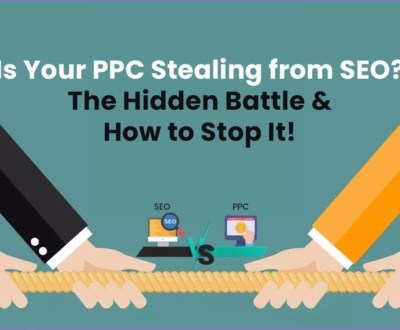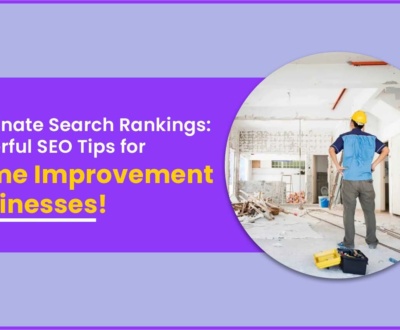Online shopping has witnessed tremendous growth.
Since, the pandemic, eCommerce has increased 77% year on year, speeding the digital adoption rate among the people.
Despite this phenomenal growth, the majority of eCommerce businesses have been unable to scale at a faster rate than they would have accepted in this era dominated by technology.
The major hindrance faced by eCommerce sites when they’re attempting to sell something online, whether it’s a new product, an online presence for a physical location, or a dropshipping business, they’re faced with a crucial question:
“How Do You Get Buyers to Find Your Store?”

According to us, the simplest answer is ‘SEO’ a.k.a Search Engine Optimization.
Customers who stumble into your eCommerce site via a search engine are more likely to make a purchase.
Search engine optimization (SEO) is a technique you may employ to raise your online shop’s visibility in SERPs and hence increase sales. We believe it is now evident why SEO is important for eCommerce sites.
SEO may be the proven strategy for your digital marketing success but what you also require is a platform where you can utilize SEO services and formulate a comprehensive digital marketing strategy for your website to gain a higher rank.
One such platform is ‘Shopify’.
Shopify is an eCommerce platform that allows anybody to create and sell their products online.
Shopify is currently the premier eCommerce platform for small and medium-sized enterprises.
One of the most astonishing Shopify figures is that the platform earned more than $2.9 billion in sales in 2020.
This figure has risen by more than $2 billion since 2015, demonstrating the platform’s consistent growth over time.
Furthermore, Shopify has had a significant influence on the global economy.
So far, they have generated $319 billion in global economic activity, a figure that is expected to rise in the coming years as more businesses utilize it to operate their online stores.
Recently, Shopify announced revenue of $1.73 Billion for the fiscal fourth quarter ending December 31, 2022.
This is a 26% increase over the previous year, indicating that the ecommerce platform provider’s turnaround efforts are bearing fruit.
Shopify SEO
The rise in the demand for Shopify may have attracted a plethora of individuals looking for a viable platform for the launch of their site.
But, are yet to figure out the art and science of ranking higher on search engine results in pages.
Shopify, like any other eCommerce platform, requires to be optimized.
In this post, we’ll look at proven strategies for enhancing Shopify SEO to better position your business in search engine results and attract more clients.
If you want to Improve SEO on Shopify, then this post becomes a must-read for you.
Without wasting any more time! Let’s just jump in, shall we?
How to Do SEO on Shopify?
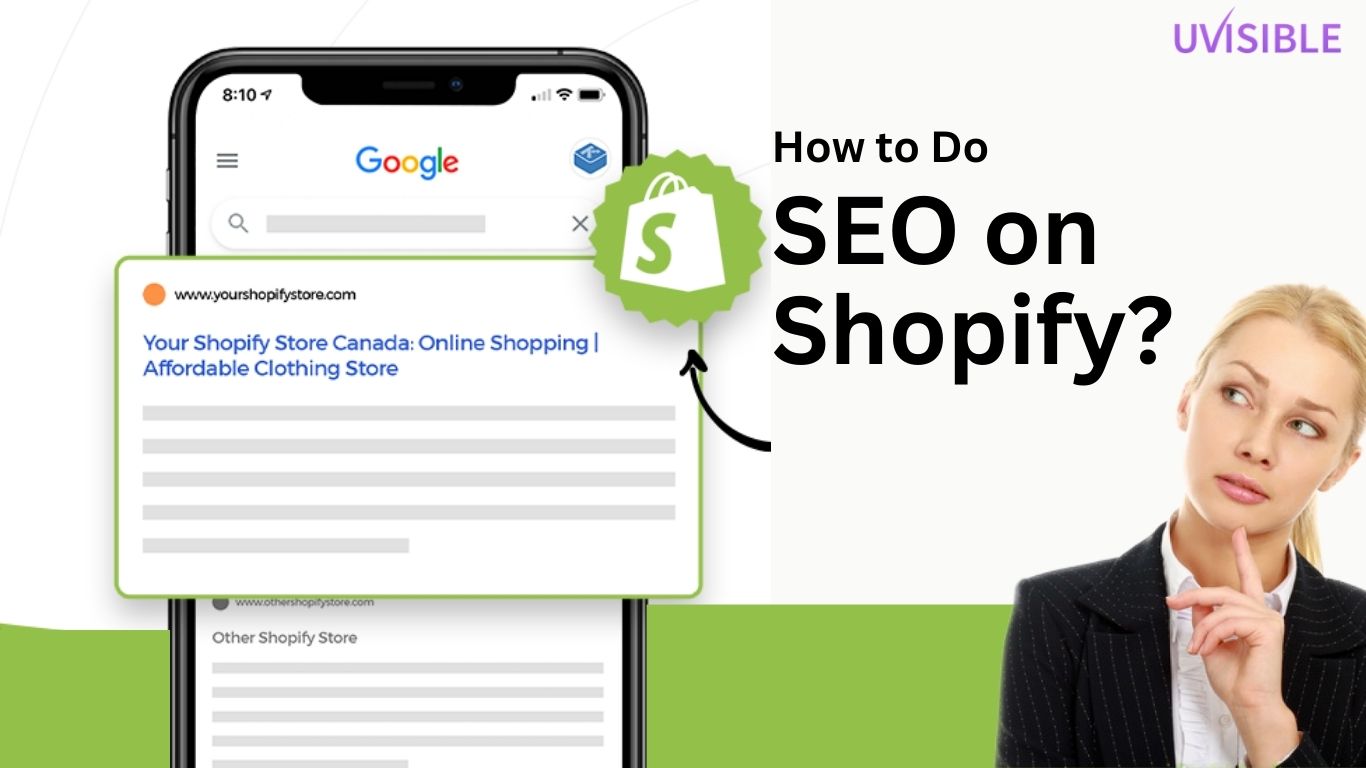
As an online business owner on Shopify, you may know the importance of SEO for your website’s success. Optimizing your Shopify store for search engines is crucial for higher rankings, increased visibility, and ultimately, more traffic and sales.
To help you get started with SEO Shopify, we’ve compiled a comprehensive list of SEO tips for Shopify and best practices to improve your website’s performance on search engines.
Steer Clear of Duplicate Content
Avoiding duplicate content is one of the most important components of Shopify SEO. Duplicate content on your website is any material that occurs in more than one area.
This might be difficult for search engines to distinguish which version of the material is the original and most relevant. While performing SEO for Shopify, you need to remember that there are two sorts of duplicate content: duplicate product pages and duplicate collections pages via pagination.
A. Duplicate Product Pages
Duplicate product pages can occur when a product has numerous URLs, such as when it appears in various collections. To circumvent this, employ a canonical tag, which informs search engines about which version of the page is the primary one.
B. Pages with Duplicate Collections Due to Pagination
Pagination happens when a collection is divided into many pages, each with its URL. This might lead to duplicate content concerns if not handled appropriately.
To avoid this, use rel=next and rel=prev tags to handle pagination appropriately, and ensure that each page contains distinct content.
Duplicate content might hinder your Shopify SEO results by penalizing your website for having repetitive or low-quality material. As a result, it’s critical to discover and resolve duplicate content concerns on your Shopify site.
You may utilize Shopify SEO tools to discover duplicate material and then take the appropriate steps to remove it.
You can boost your search engine rankings and attract more people to your Shopify store by ensuring that your website offers original, high-quality content.
ALSO READ: Franchise SEO Strategy
Crawling and Indexing Rate Should Be Proper

Crawling and indexing are important components of Shopify SEO because they influence how search engines discover and rank your website.
Here are some helpful hints for improving your website’s crawling and indexing:
- Robots.txt file
The robots.txt file is a text file that instructs search engine crawlers on which pages of your website to crawl and index.
By altering the robots.txt file, you may control how search engines interact with your website. It’s critical to ensure that you’re not blocking any crucial pages or content that you want to rank.
- Sitemap.xml
A sitemap.xml file is a file that identifies all of the pages on your website and provides search engines with important information about the structure of your website.
Submitting your sitemap to search engines can help with crawling and indexing, which can lead to improved search engine rankings.
- Adding the Noindex Tag
The noindex element instructs search engines not to index a certain page or piece of content.
It might be useful if you don’t want specific sites or information, such as thank you pages or duplicate content, to appear in search engine results pages (SERPs).
To prevent blocking any vital pages you wish to rank, use the noindex tag with caution.
- Redirects
When you change the URL of a website, you must set up redirects to ensure that visitors and search engines can find the new page.
Redirects can help safeguard the link equity of the original page while simultaneously guiding users and search engines to the most relevant content.
- Log Files
Log files may provide valuable insight into how search engines crawl and index your website.
By checking log files, you may discover crawl difficulties, locate sites that aren’t being scanned or indexed, and improve your website’s crawling and indexing.
By enhancing your website’s crawling and indexing, you may improve your search engine rankings and attract more customers to your Shopify store.
It is vital to monitor your website’s crawling and indexing regularly using tools like Google Search Console and third-party professional SEO tools to identify any issues and take the necessary steps to optimize your website for search engines.
Be Serious with Structured Data

Structured data is any group of data on a webpage that is arranged and formatted in a specific way.
In the case of Shopify SEO, structured datcategorizedrised and tagged with precise groupings of text that assist search engines in comprehending the context of that information and offer correct results to searchers.
- Product
Product structured data delivers vital information about your items to search engines, such as the product name, price, availability, and review scores.
For example, if you are looking to buy “Football Shoes” and you search for the same in a search engine, you will find various sites mentioning football shoes.
To open each possible site and check out the product, its reviews and ratings, and the price is not a possible option, so you would want the sites should display all such particular information in the search results.
Thus, providing product-structured data may make your items stand out in search engine results pages and attract more visitors to your Shopify shop.
- Article
Search engines may use article-structured data to learn more about your blog posts or other article material on your website, such as the author, date published, and article title.
Using structured data in your articles will help your blog posts appear as rich snippets in SERPs and increase click-through rates.
Also, you can try incorporating FAQs into your blog posts or articles as it significantly increases the chances of featured snippets appearing on your site.
- Breadcrumb List
Structured data from a breadcrumb list can tell search engines about the hierarchical structure of your website’s content.
Structured breadcrumb lists may assist search engines in understanding how your material is organized and make it easier for people to explore your website.
- Implementing Structured Data
It is quite simple to integrate structured data into your Shopify store.
You may use Shopify applications like Schema App or JSON-LD for SEO to automatically add structured data to your website.
You may also manually add structured data using Shopify’s theme editor or liquid files.
By putting structured data on your Shopify shop, you can offer search engines vital information about the content of your website and boost its visibility in SERPs.
To prevent any penalties or difficulties with search engines, you must verify that structured data is implemented appropriately and that the best Shopify SEO practices are followed.
- Add a Schema Markup for Rich Snippet Eligibility
Implementing a schema markup is a key step in Shopify SEO, especially when you are conducting structured data.
Schema markup is a piece of code that you may add to your website to assist search engines in comprehending the content of your website.
By including schema markup on your website, you may assist search engines in displaying your material in a more ordered and visually attractive manner.
A rich snippet is one technique to add schema markup to your website.
A rich snippet is nothing but a code that is applied to your website to offer more information to search engines.
To add schema markup to your Shopify website, you utilize a free online tool like Google’s Structured Data Markup Helper.
This tool lets you pick the sort of material on your website that you want to markup and then creates the code that you can add to your website.
By adding schema markup to your Shopify website, you may improve the presentation of your content in search engine results and boost the possibility of getting more clicks.
Looking to Improve your structured data to rise above the competition?
Request a consultation with Uvisible, the Best Ecommerce SEO Agency, today, and let us help you achieve Ecommerce greatness!”
Improving Shopify Site Speed
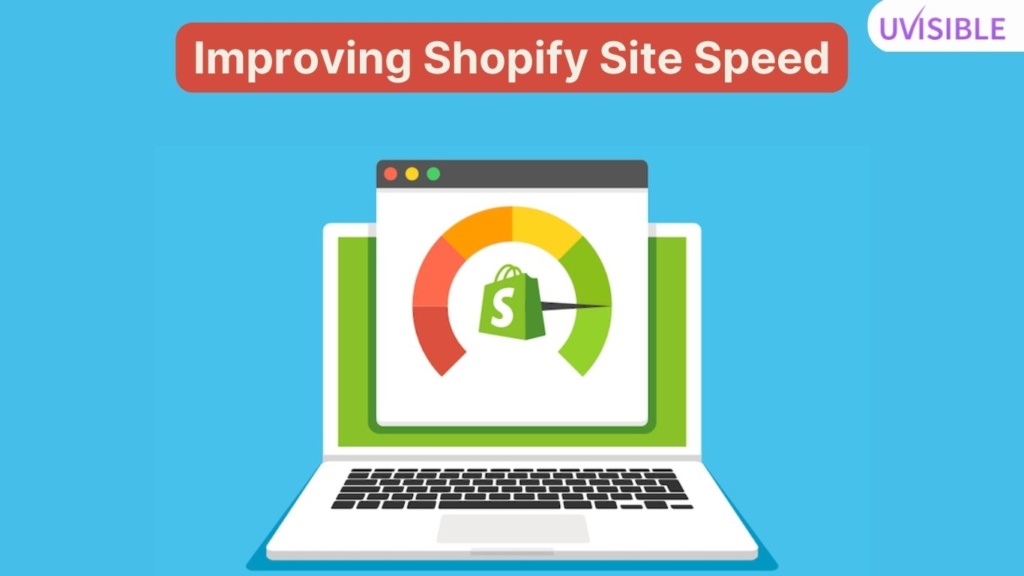
Optimizing the performance of your Shopify site is an important part of Shopify SEO.
One of the most essential criteria for ranking high in search engine results pages and creating a great user experience is site speed. Here are some pointers to help you enhance the performance of your Shopify site:
- Image Optimization
Huge picture files can considerably slow down the loading speed of your website.
Reduce the size and compression of your photographs without sacrificing quality.
To optimize your photographs on Shopify, you must utilize easily available image optimization tools.
- Make use of a Content Delivery Network (CDN)
A CDN helps spread your website’s information over numerous servers across the world, which can reduce load time for users from all over the world.
Shopify has a CDN that can help speed up your site.
- Reduce HTTP Requests
Every element on your website makes an HTTP request to load, including pictures, scripts, and stylesheets.
Reduce the amount of HTTP queries on your website to make it load faster.
Merging files, using fewer external scripts, and limiting the number of plugins can all assist in minimizing the number of HTTP requests.
- Allow Browser Caching
Browser caching allows users to save files from your website on their browser, which can reduce page speeds for repeat visits.
Enabling browser caching on your website can greatly boost its performance.
- Use a Quick Shopify Theme
Selecting a fast-loading Shopify theme may substantially increase the performance of your website.
The Shopify theme shop has a wide selection of high-quality themes that are designed for speed and SEO.
- Minimize the Number of Redirects
Redirects can increase the number of HTTP requests and hence slow down the loading speed of your website. Redirects should be used sparingly and only when required.
You can increase your Shopify site performance, user experience, and SEO rankings by applying these strategies.
To ensure maximum performance, you must periodically analyze your website’s speed and make any required modifications.
Keyword Research and Optimization
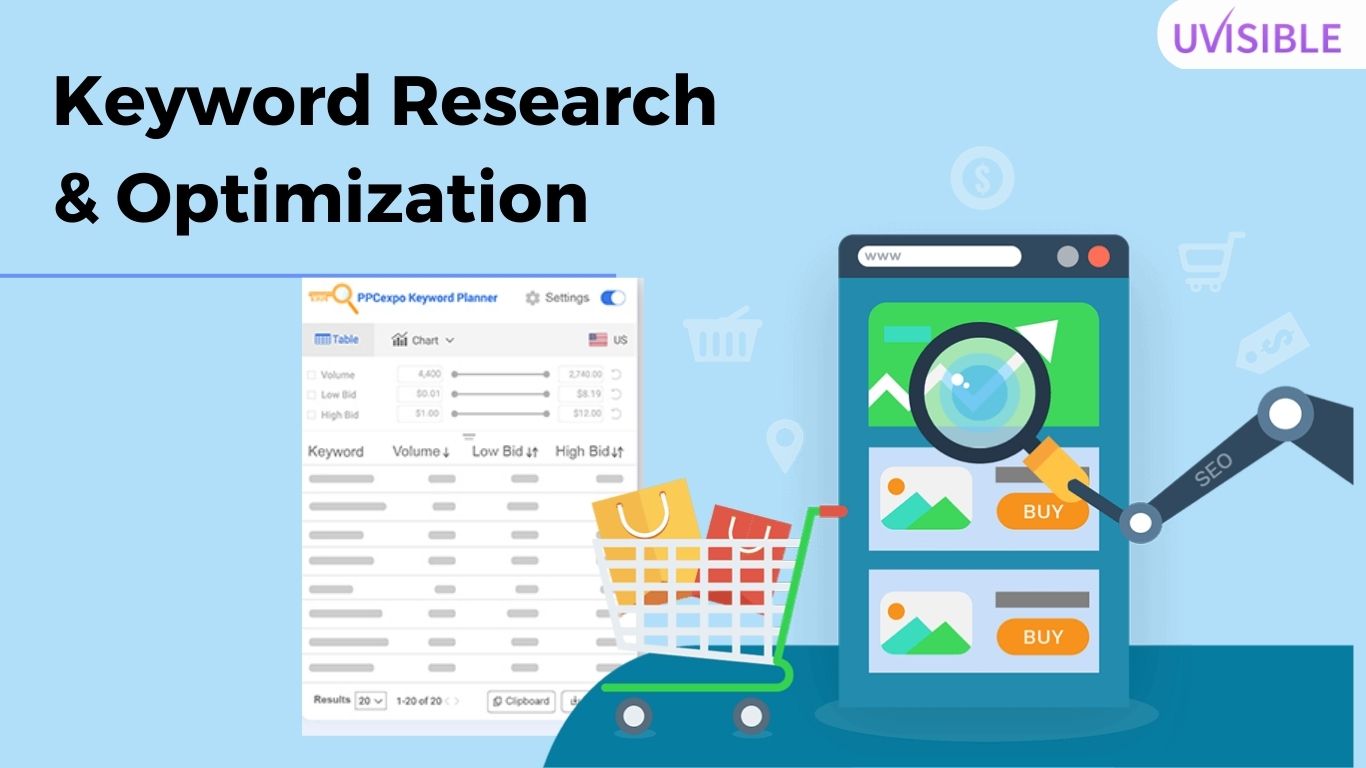
Keyword research and optimization are critical components of Shopify SEO.
It entails determining the most relevant and high-volume keywords for your shop and strategically incorporating them into your content, product descriptions, meta tags, and URLs to rank better on search engine results pages (SERPs).
Steps for Conducting Keyword Research and Optimization for Shopify SEO
- To determine the ideal keywords for your shop, undertake extensive keyword research using tools such as Google Keyword Planner, SEMrush, or Ahrefs.
- Once you’ve found your keywords, you optimize your content and meta tags by including them naturally and sparingly to assist search engines in recognizing the relevance of your store to the user’s search query.
- Optimizing your product descriptions with long tail keywords and synonyms can also help you rank for more targeted queries.
- You can also make your URLs more understandable to search engines and consumers by inserting relevant keywords.
- Frequent keyword updates and content optimization can help your shop rank better in SERPs, attract more traffic, and enhance conversions.
Adding Content to Product Pages
Providing content to your product pages is pivotal for Shopify SEO.
It improves your store’s ranking in search engine results pages (SERPs) by offering useful information to both search engines and potential consumers.
Especially, if you are an eCommerce site, for you performing SEO for eCommerce product pages becomes the utmost priority given its rich and positive results.
Product descriptions, features, advantages, and specifications, as well as high-quality photographs or videos, may all be included in your SEO for Shopify strategy.
You may improve the user experience and encourage customers to purchase by adding useful and original content to your product pages.
One of the most important things to remember when adding content to product pages is to focus on the keywords that you discovered throughout your keyword research.
You may naturally incorporate your target keywords into your product descriptions and other material that is related to the product and the user’s search intent.
Moreover, make sure that your product descriptions are well-written, interesting, and insightful, as this will help your business stand out from the crowd.
Try including customer reviews or testimonials on your product pages to assist in developing trust and drive conversions.
You can boost your Shopify SEO, attract more visitors, and increase sales by adding relevant content to your product pages.
Shopify Blog is Highly Useful
It is a primal element of Shopify SEO.
Blogging may help your shop gain more visitors, raise brand awareness, and position itself as an industry leader.
You may increase your search engine rankings by writing high-quality blog material, especially if you incorporate relevant keywords and hyperlinks to your product pages.
To start creating great blog material, choose themes that are relevant to your business, audience, and products.
You may then do research and publish high-quality, educational, and interesting articles for your viewers.
For example, if you are a Health and Fitness eCommerce site, you must roll out some informational blogs on topics like, “How to Stay Fit and Health in 10 Easy Ways?”, “Why Health is Wealth?”, “Ways to Lose Weight”, and so on.
This content strategy will not only increase your site’s authority and traffic but will also lead to an interlinking opportunity with your product pages.
Thus, increasing your chances of sales.
While writing blog material, one of the most important sub-points to remember is to optimize your blog entries for search engines by incorporating relevant keywords, meta descriptions, and title tags.
- Include Target Keywords: Your meta titles and descriptions should include the target keywords that you want to rank for. This will help search engines understand what your blog post is about and can improve your chances of ranking higher in search results for those keywords.
- Keep It Relevant: Make sure your meta title accurately reflects the content of your blog post. Avoid using clickbait titles that are not related to the actual content, as this can lead to a high bounce rate and lower rankings.
- Use Engaging Language: Your meta title and description should be written in a way that encourages users to click through to your website. Use action words, numbers, and other engaging languages that will make your listing stand out from others in the search results.
- Keep It Concise: Both your meta title and description should be kept concise and to the point. Google typically displays up to 60 characters for the title tag and up to 155 characters for the meta description, so make sure you use this space wisely.
- Image Optimization
Image optimization is an important part of Shopify SEO. Here are some picture optimization recommendations for search engines:
- Image File Size Optimization: Huge picture file sizes can considerably slow down the loading speed of your site. You may compress your photographs without sacrificing quality by using an image compression application like TinyPNG.
- Image File Renaming: When uploading an image to your Shopify store, give it a meaningful, keyword-rich filename. Avoid using generic filenames such as “image.jpg” since they give no context to search engines.
- Make use of Alt Text: The alt text of an image is a written description that appears when the picture fails to load. Alt text is used by search engines to determine what the image is about. To assist search engines in crawling and indexing your photographs, use descriptive alt text that incorporates important keywords.
- Make use of Image Sitemaps: Making an image sitemap is an excellent approach to informing search engines about all of the photos on your website. Shopify automatically produces an image sitemap for your store, which you can upload to Google Search Console.
- Host Images on Shopify: Putting photos on Shopify’s content delivery network (CDN) guarantees that your images load quickly, which improves the overall performance of your site.
For more information regarding Image SEO do check out our SEO Image Optimization Guide.
Better UX
Customer acquisition and retention may be greatly aided by focusing on the Shopify store’s user experience (UX) including interesting material like videos and images on your website is one method of doing so.
Incorporating videos is a unique Shopify SEO strategy for your site, for example, through this, you can encourage visitors to stick around for longer, which in turn boosts your conversion rate.
If you have a Shopify shop, consider these suggestions for adding interesting media:
- Use Video and Other Interesting Media
- Add Product Videos: A product demonstration or a review from a satisfied client would both work. A clearer picture of the product’s benefits is painted for the consumer this way.
- Use High-Quality Images: Make sure all of the photographs on your site are of excellent quality and suitable for usage online. Customers are likely to abandon a website if the visuals are blurry or distorted.
- Use 360-degree Product Images: Using this function, consumers may get a more comprehensive look at the product.
- Use Lifestyle Images: Demonstrate your wares in natural contexts to better assist consumers to see how they may fit into their own lives.
- Make Advantage of User-Created Media: Expose your brand to user-created media by showcasing images and videos of your items in action. This will increase your brand’s credibility and assurance in the eyes of consumers.
Mobile Optimization

Did you know the number of people using smartphones globally?
The current number of mobile phone users, including smart and feature phones (simple mobile phones that lack apps and complicated operating systems and are more common in poor nations), is 7.33 billion in 2023, accounting for 91.40% of the world’s population.
Since more visitors access websites via mobile devices, mobile optimization is vital for Shopify SEO.
A mobile-friendly website not only enhances the user experience but also helps you rank higher in search engines.
To optimize your Shopify website for mobile, and make sure the design is responsive, which means it changes to match any screen size.
To enhance website load speed, you could also try compressing your photos and minimizing the size of your files.
Another significant consideration is the use of bigger fonts and clear images, which make it simpler for consumers to read and navigate your site on smaller displays.
You can also use Google’s Mobile-Friendly Test to assess your site’s mobile friendliness and find any issues that need to be addressed.
You may enhance your user experience and rank higher in search engine results by optimizing your Shopify website for mobile.
Bottom Line!
Implementing effective SEO strategies on your Shopify store is essential for improving your online visibility and increasing your sales.
By following the above-mentioned SEO Tips for Shopify, you can ensure Shopify SEO optimization for search engines, providing your potential customers with a better online shopping experience.
Remember, SEO is an ongoing process, so it’s important to continuously analyze and improve your site’s performance.
With this post, you will, not only understand the right SEO techniques but, will also get the answer to the question of ‘How to Improve SEO on Shopify’.
We believe with consistent effort, you can improve your Shopify SEO leading to better search engine rankings, driving more traffic to your store, and ultimately boosting your business’s revenue.
If you are still doubtful of your eCommerce SEO Shopify services and strategies and want to discuss your complete Shopify SEO Roadmap with a Professional!
Contact Uvisible NOW! Your Dedicated and Performance-Driven Shopify SEO Agency!
About us and this blog
We are a digital marketing company with a focus on helping our customers achieve great results across several key areas.
Request a free quote
We offer professional SEO services that help websites increase their organic search score drastically in order to compete for the highest rankings even when it comes to highly competitive keywords.
Subscribe to our newsletter!
More from our blog
See all postsRecent Posts
- How to Create Effective Location Landing Pages for Local SEO March 12, 2025
- AI is Taking Over SEO – Adapt Now or Disappear from Search! March 7, 2025
- Maximize Your Reach with Google Discovery Ads March 1, 2025




